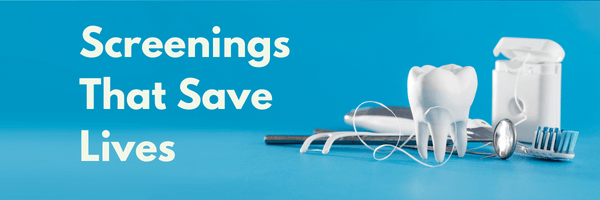
Hiring Through a Dental Labor Market Crisis (Part 1)
Posted May 19, 2021
Dental Labor Supply & Demand by Position
As the nation’s largest dental professional job board, DentalPost is often where practices look for solutions to their hiring problems. But there is one problem stumping everyone (in our industry and beyond) – the labor supply, or lack thereof. With a shortage of available dental clinicians in the workforce, we’re collaborating with hiring managers to get creative in how we help practices and dental service organizations (DSOs) attract talent and fill team gaps. And there are plenty of gaps, not just in dentistry, but in every industry that employs skilled labor. The following is a breakdown of the latest in the dental labor pool.
Dental Assistants
Dental Assistants were among the employees laid off in high numbers during the pandemic. With dental practices attempting to return to normal, dentists report difficulty finding and hiring the assistants they need. The magnitude of the problem is illustrated by a local news article published in Everett, WA last month. They reported more than 1,100 openings for dental assistants with less than 200 qualified candidates.
Some DAs have been absorbed into other types of employment. Some are not yet ready to return to work, while others are seeking higher compensation before they do. Fewer new DAs have graduated from dental assisting programs during the pandemic. There was a growing demand prior to the pandemic. In fact, the latest forecast from the Bureau of Labor Statistics (BLS) is for dental assistant employment demand to grow 7% between 2019 and 2029, higher than any other occupation.
Our most recent salary survey conducted in mid-2020 indicated most dental assistants prefer full-time employment and would like benefits. Prior to the pandemic, dental assistants averaged 36-40 hours of work per week and received hourly pay. On thinner teams during the pandemic, many worked fewer hours per week and some worked more.
Just prior to the pandemic, 50% said they had applied for at least one new job in the last year. Based on all the above, we think dental professionals working part-time will likely seek full-time employment as we come out of the pandemic – even if it means working somewhere new.
Because most dental assistants are not receiving traditional benefits, DSOs offering them will have a hiring edge.
Dental Hygienists
Prior to the pandemic, the BLS estimated the employment demand for dental hygienists will grow by 6% between 2019-2029. Then came COVID-19. In a joint survey conducted by the ADA and American Dental Hygienists’ Association, it was reported that 1 in 12 hygienists left the workforce. According to the Health Policy Institute, 59.1% left voluntarily. Today’s RDH published its survey results in February, indicating the top reasons for leaving. the profession included retiring early and not feeling safe during the pandemic.
With vaccinations and the CDC relaxing their stance on mask guidelines, as well as major retailers eliminating mask requirements, hopefully, dental hygienists will flood back into the workforce. However, some hygienists report they will not return to work. Many full-time hygienists who worked during the pandemic report being physically and emotionally exhausted from working longer hours. On a high note, the newest dental hygiene graduates are eager to start their careers.
Dentists
The demand for dentists is strong. If you are looking for a new associate in your private practice or a dentist for your dental service organization, the competition appears to be especially high in Florida, Arizona, Texas, New York, Washington, Illinois, Tennessee, North Carolina, Missouri, Pennsylvania, and Ohio.
Many associate dentists working in private practices during the pandemic suffered income reduction or layoffs. According to the Health Policy Institute data, the supply of dentists year over year steadily increased, with associates being rehired slowly. Despite their accelerated migration to DSOs, it may take a while for associate dentists to find desirable positions in places with availability.
With teams stretched thin, burnout and pandemic-reduced revenue have made buyout by dental corporations more attractive to dentists who own their own practices. Like associate dentists who are seeking their next position, many formerly independent dentists will find their way into dental service organizations or pre-retirement associateships to continue earning.
Labor Supply & Demand By Generation
With all generations of dental clinicians receiving multiple offers, including signing bonuses in some cases, it’s clearly a job seeker’s market. Hiring managers should act quickly when discovering a qualified candidate. Understanding the different demographics of multi-generational candidates will help you streamline the screening process.
Boomers and Gen X
Because of their experience, Boomers (born before 1965) and Gen X (born 1965-1980) have no difficulty finding positions. By now, they know themselves and their work well, including their preferred type of dental practice where they’re the happiest working.
Our survey data indicates the majority of these hygienists prefer working in private practices. They are also the most likely to reside in a multi-income household than other positions within the dental office. This has allowed RDHs to explore more flexible schedules and customized approaches to earning a living.
Although there are still many 65+ dentists and hygienists actively in the workforce, many are opting for part-time as a pre-retirement or return-to-work approach. With Boomers retiring and Gen X starting to retire, we’ve known for a while about a possible years-long RDH shortage.
Tip: Seeking a part-time dental hygienist? Screen candidates to find those most interested in work-life balance for interviews. Download your free Dental Hiring Toolkit for more interview tips.
Gen Y (Millennials) and Gen Z (born since 1995)
The youngest candidates, who are eager to optimally earn and less encumbered with family responsibilities, want full-time positions. Based on the accelerated hiring practices of DSOs, including frequent visits to schools, they have a clear hiring advantage.
According to our most recent DentalPost salary survey, dental hygienists ages 18-24 are 2x more likely to work at a corporate dental practice than those who are 45 years or older. We know millennials change positions often and are willing to relocate for “greener pastures” as frequently as every two years. We anticipate Gen Z will be similar.
Tip: Seeking a full-time dental hygienist or dental assistant? Don’t discount new graduates or those with little experience. They are eager to work and learn. Keep in mind, Gen Z has a reputation for impatience with inefficiency and may change jobs rapidly when encountered.
In 2021, attracting dental clinicians – especially dental assistants and hygienists, requires a new approach, more energy, greater intention, and persistence. We must look beyond compensation, rethink our old hiring mindsets, and get more creative in these challenging times for the dental labor market.
We connect and educate more than 900,000 job seekers in the U.S. and Canada to build better places to work through teams that excel.




.png)




.png)
